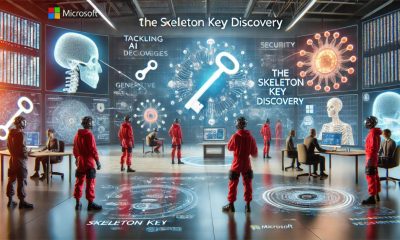Artificial Intelligence
AI-Generated Content: What Does This Mean For Creators?

Since gaining popularity in the last few years, Generative AI has permeated various industries beyond our expectations. Many startups and large tech corporations have swiftly entered the market with their Generative AI solutions. For instance, Microsoft’s integration of DALL-E into Bing and Meta’s Voicebox are just a few examples that can produce high-quality AI-generated content.
This is just the tip of the iceberg. There are numerous AI tools already available in the market that can generate video content, music, voice, and text.
As AI gains the ability to generate a wide range of realistic content, concerns emerge regarding its impact on content creators. For instance, artists are protesting that AI image generators use their work without permission or compensation.
Hence, in this article, we’ll touch upon how AI-generated media is affecting the work of content creators.
Synthetic Media – A Threat to Professional Creators?
As AI-generated content (like deepfakes or photorealistic images and videos) flood the internet, creators become more worried about the capabilities of Generative AI. The main question here is: If AI can create professional content much quicker, what does the future look like for human creators? Let’s assess the current landscape.
Rapid advancement in AI-generated speech has shown great potential to mimic the human voice with impressive accuracy. Hollywood unions for actors and writers are concerned that AI systems will eventually replace them. They are also concerned that their creative work is being used to train these AI systems. Unions are arguing that the use of AI must be disclosed, and the relevant actors, writers, and performers should be compensated in their contracts.
There are many other platforms have started endorsing AI-generated content. For example, Shutterstock has announced that, with the help of OpenAI, it will begin selling AI-generated stock imagery. This raises concerns as DALL-E2, the AI model used to generate the images, will produce content that competes with the same artists whose work was used to train it. To resolve this issue, Shutterstock has promised to reimburse creators affected by AI art models.
Adobe has also embraced Generative AI, resulting in controversy among digital creators and artists. Hence, Adobe has introduced a creator-friendly family of tools known as Firefly to minimize the creators' concerns over copyright issues.
Copyright Confusion

The rise of AI-generated content has blurred the boundaries of ownership, leading to an uproar among artists and creators. For instance, on May 4, Heart On My Sleeve, a song supposedly created by Drake and The Weekend, was released on TikTok, racking up about 15 million views on the platform. However, on further investigation, it turned out that neither of the artists had made the song. Instead, it was created by a TikTok user using AI.
Universal Music Group, a music company that manages Drake’s music, has tried to get the song links removed, but it is already all over the internet. This incident has highlighted the challenges and implementation of copyright law for AI media.
According to the U.S. Copyright Office, copyright law generally associates authorship with human creators. As a result, works produced solely by AI without any human influence or input are typically ineligible for copyright protection.
However, AI-generated content typically involves human influence in some form, which means that copyright law can apply. For instance, we must determine copyright ownership if the AI system is trained using human-generated or real-world data. This means that the outcome of such systems could fall under derivative work, which is typically protected by copyright law.
So, currently, the legal system is trying to figure out the nuances of Generative AI solutions and how they can affect the creative rights of individuals.
Human Creativity
All things aside, the one thing AI can't replace is human creativity, at least for now. It lacks the emotions, personal experiences, and passion that goes into creating art.
Additionally, every AI model or product is based on human work, either scraped from the internet or curated offline. Therefore, AI models can only be as creative as the data they are trained on. They lack the ability to invent new art styles, rhythms, or storylines.
As AI becomes more mainstream, authorities must set guidelines and boundaries to protect creators and artists. However, this will be challenging since the guidelines must not hinder technology innovation as well. Combining artificial and human intelligence can open up new avenues for creativity.
For more information on AI advancements, visit unite.ai.














